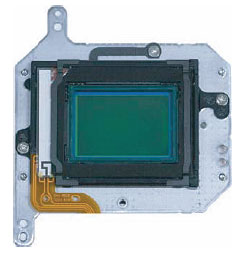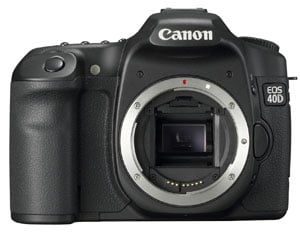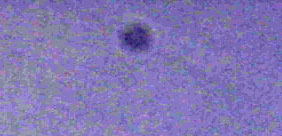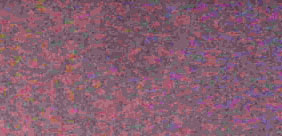Canon EOS 40D
-
-
Written by Gordon Laing
Canon EOS 40D anti dust
Canon EOS 40D features : Lenses and viewfinder / Screen and menus / Sensor and processing / Anti dust
Canon EOS 40D features continued…
Lenses and viewfinder / Screen and menus / Sensor and processing / Anti dust
Since the introduction of the EOS 400D / XTi, Canon has been equipping its DSLRs with anti-dust features – indeed the only model in the current range without them is the EOS 5D. The new EOS 40D applies the same three techniques as other Canon DSLRs to combat dust: anti-static coatings and materials to reduce it sticking in the first place, a vibrating filter which tries to shake-free the more stubborn particles, and a software-based solution which maps the position of the pesky marks and appends them to images for automatic removal later. Canon claims the dust removal performance is the same as the 1D Mark III.
 |
The 40D’s anti-dust filter vibrates during startup and power-down, although can be interrupted by half-pressing the shutter release button. It’s also possible to manually activate the process or to simply flip open the mirror and shutter for some well-placed gushes from a blower.
At Cameralabs we believe it’s important to test the anti-dust facilities of DSLRs. Dust is a major bugbear of DSLR owners and anti-dust capabilities have finally become a feature all manufacturers are including on their new models. At this point though it’s important to note the evaluation of anti-dust dust systems can never be as controlled or consistent as other tests. After all, there’s no way of counting the number or type of dust particles which currently lie within a body, nor any way to introduce a consistent number of test particles for it to subsequently get rid of. As such it’s impossible to conclude one system is categorically better than another at eliminating dust.
|
Just because something can’t be scientifically measured though, doesn’t mean it should be glossed-over or ignored in a review. Anecdotal evidence can be a valuable indicator and by gathering it from a number of sources over time we can build up a picture of how effective, or ineffective a system performs. That’s our belief at Cameralabs, so for the record here’s what we found.
 |
Following earlier anti-dust tests we removed the lens from the EOS 40D and left the body face-up indoors for five minutes, then for a further five minutes outside in a light breeze. While there’s no way of knowing exactly how much dust got into the body, we’re pretty confident such activity would have resulted in many visible dust marks on other DSLRs. We then switched the camera on and off several times to vibrate the filter.
The easiest way to spot dust marks is to manually focus a lens to infinity and shoot a plain white surface from about 30cm away. It’s revealing to try this at different apertures, as the bigger the f-number, the sharper and more defined any dust marks will become. So the ultimate torture test would be at, say, f22, although to be fair it’s important to also test at the more common apertures used day-to-day.
This is in fact the same technique used by the EOS 40D’s Dust Delete Data system, so before starting our own tests we performed this step, which should in theory note the positions of any dust marks and append this information to subsequent images. We then photographed the white surface at aperture settings from f4 to f22, opened the images in Photoshop and zoomed-in to 100% for close examination using a calibrated Eizo CG210 monitor.
With the aperture set to f22, we noticed five very faint patches on the image, but compared to most other DSLRs we’ve tested, they were almost invisible. We’ve cropped-out the worst offender and shown it below, alongside a version with the levels adjusted in Photoshop to an extreme level to better-reveal its position.
Canon EOS 40D dust example at f22 | ||
 |  | |
| 100% crop measuring 282×136 pixels | 100% crop measuring 282×136 pixels with Levels | |
As we examined the images taken at larger apertures, the dust patches gradually became fainter until at f11 they were rendered invisible by the smaller depth of field. We carefully marked the position of the dust mark in the f22 example and cropped the exact same area from the f8 sample to illustrate the difference below. On the unprocessed image, the dust mark is invisible. Adjusting the Levels once again to an extreme degree reveals the dust mark as a larger, out-of-focus blob, but even then it’s hard to see.
Canon EOS 40D dust example at f8 | ||
 |  | |
| 100% crop measuring 282×136 pixels | 100% crop measuring 282×136 pixels with Levels | |
This is an impressive – or lucky – result for the EOS 40D. When we tested the EOS 400D / XTi, we suffered from several quite visible dust marks even after the system had vibrated several times. These were only removed later by manually using a blower. Our tests here prove the EOS 40D also still had dust even after the filter had vibrated, but by either good fortune or design, the actual particles were beyond the focal plane’s depth of field at all but the smallest apertures, and therefore were rendered invisible on most shots. A good result here then for the EOS 40D.
Note: despite updating the Dust Delete Data, the supplied Digital Photo Professional software didn’t seem to detect it being appended to any files, so we couldn’t test this feature. This is something we’ll return to and update in the future.




